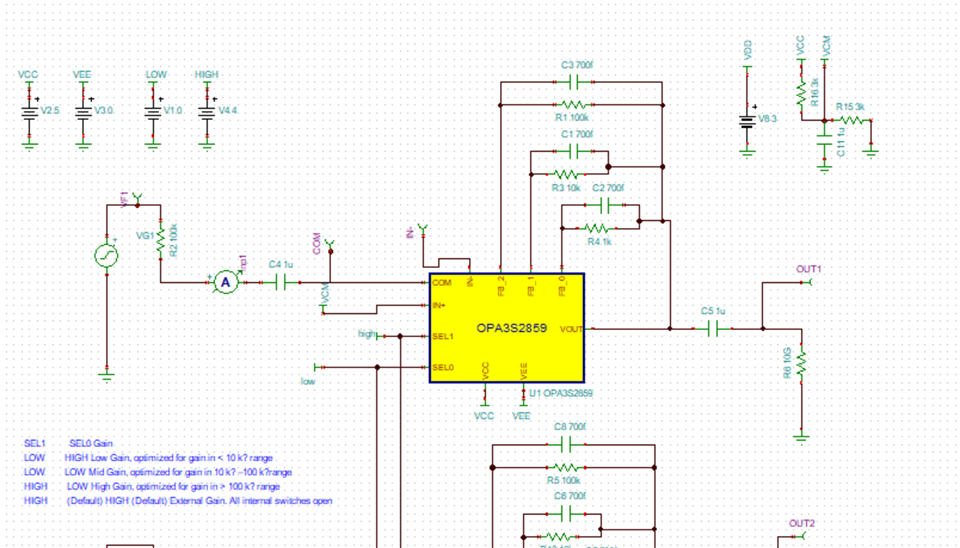Hi,
I just got a new board with OPA3S2859-EP. I do not see output on VOUT_A p19 when I put 20mV from 50 Ohm signal generator at 500 kHz
I use single pole power supply of 5V. INA+ and INB+ connected to 2.5V with bypass cap.
There is not much to configure for this OpAmp and here is what I have
Pin Voltage
1………..2.5V
2…………5V
3………….5V
4…………...5V
5……………5V
6…………….2.5V
7…………….N/C
8……………..N/c
9……………...100k resistor
10…………….10k resistor
11……………..1k resistor
12………………100k,10k,1k combined
13……………..GND
14………………5V
15……………….5V
16……………….5V
17………………..5V
18………………..GND
19………………..100k,10k,1k combined
20………………..1k resistor
21………………….10k resistor
22………………….100k resistor
23…………………..50 Ohm signal generator 20mVp-p
24...........................N/C
When I look at p19 Vout_A I see DC at 4.5V, at p24 IN_A- I measure 2.1V dc. This is a new chip and the data sheet does not provide single pole power supply schematics.
I did run simulation which showed me it should work in this configuration It draws 50 mA at 5V
Thanks vadim


